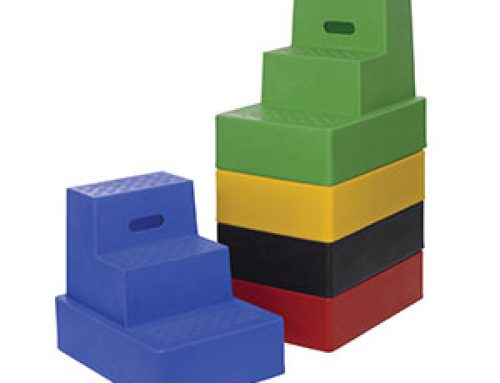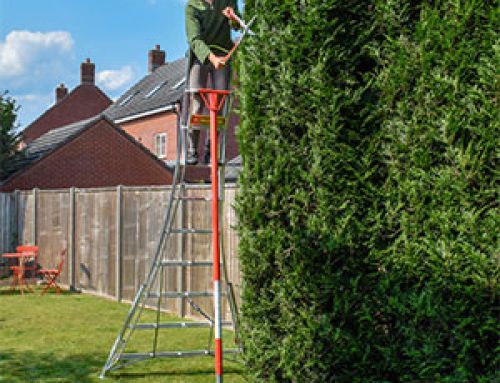Straight Ladders versus Telescopic Ladders – Which is Best?
Telescopic ladders are a relatively new innovation in the world of ladder design; it,s not easy to redesign a basic principle that has been around and in constant use for thousands of years. However, the space savings offered by the telescopic design have seen it really take off and many people with limited storage space or the need to transport a ladder regularly have gone for the telescopic option over a standard straight ladder.
One of the telescopic models that Midland Ladders offers is the Xtend & Climb Pro Telescopic ladder. Costing £149 including VAT and delivery, this telescopic ladder extends from 81 centimetres to 3.8 metres, with all heights in between available. Because it only needs to be extended to the length you need, it is effectively every single height of straight ladder in one. It weighs 13.7 kilos and is 48 centimetres wide, making it perfect for storing in a small space or transporting in a car boot. It is rated EN131 for trade and industrial use and can take up to 150 kilos of load. This makes the Xtend & Climb ideal for surveyors. The rungs lock into place and it is easy to put up and take down. A carry bag is available for this ladder to keep it stored neatly when not in use.
Youngman also produce a 3.8 metre telescopic ladder with 13 treads and a closed height of 85 centimetres. This is slightly taller than the Xtend & Climb model and it does cost a little more at £155. The rungs are slightly wider (the top rung is 47 centimetres wide, but with telescopic ladders the rungs get narrower as they reach the top), but they are also deeper, making this telescopic ladder more comfortable to climb. It is rated to EN131 and will take up to 150 kilos, so specification wise, it is the same as the Xtend & Climb. However, the Youngman telescopic ladder comes with a two-year warranty and despite being 300 grams heavier than the Xtend & Climb, is more user friendly. Youngman identified the problem of collapsing a telescopic ladder without getting fingers caught between the rungs, so they have added a damping action to make the sections lower down gently, avoiding the fast collapse of other models. They have also reduced the gapping in between each telescopic section so the whole thing is more rigid to climb, making you feel safer.
Another available model is the Pro-User 2.9 metre telescopic ladder. This is much cheaper than the other two at £89 including VAT and delivery, but is almost a metre shorter. It is certified to EN131 and takes 150 kilos of load and also has a 1-year manufacturers warranty. Storing down at 79 centimetres, it is the shortest and lightest at 8.5 kilos, so is more suited for home use than the other two. When you consider that both the Xtend & Climb and Youngman models can be set to the same height as this Pro-User model, it seems like the extra investment in the longer model is worth it; that way you have the longer length when needed and aren’t constrained by the shorter length of this model. However, if the ladder is only used in a holiday home, caravan or occasionally in the home, it is not always worth spending the extra money for something you’re not going to use often.
The equivalent length straight ladders are always going to be cheaper because there are no moving parts to build and no telescopic construction, rung locks or other safety features to incorporate. The comparable straight ladder is the Lyte 2.5 metre double section extension ladder. This ladder sits in between the two heights available with the telescopic ladders and is also rated to EN131. Weighing 9 kilos it is lighter than the telescopic models (with the exception of the shorter Pro-User model) and extends to 3.8 metres, the same as the Xtend & Climb and Youngman ladders.  It is much cheaper at £66 including VAT and delivery. It has two sections with 8 rungs each, more than the telescopic options. More rungs makes it easier to climb because there is not so much distance in between them. The Lyte double section ladders can be used as independent ladders as well, because the sections are detachable. This feature gives you some of the versatility of a telescopic ladder, because you can use this as a 3.8 metre ladder, or two 2.5 metre ladders. However, the storage of this ladder is where the telescopic models have the edge. The smallest length this ladder can be is 2.5 metres, which means you need a big enough space to securely store this ladder: it’s not one that will fit down the side of the washing machine!
Choosing between these four models comes down to space and cost. They are all suitable and rated for the same activities, and will take the same load. The straight extension ladder offers some versatility in height, but not as much as the telescopic models, although it is less than half the price of the telescopic ladders that achieve the same overall height. If space is not an issue, the Lyte extension ladder is the obvious choice, but if storage is at a premium then the Xtend & Climb or Youngman models are the best bet. If you don’t need that much working height, the cheaper Pro-User telescopic ladder is your best bet, combining low cost and a small storage space. The best buy though, is probably the Youngman telescopic ladder. It might cost more, but it has a longer warranty, deeper treads, a more user-friendly operation and requires a very small storage space.






Leave A Comment
You must be logged in to post a comment.